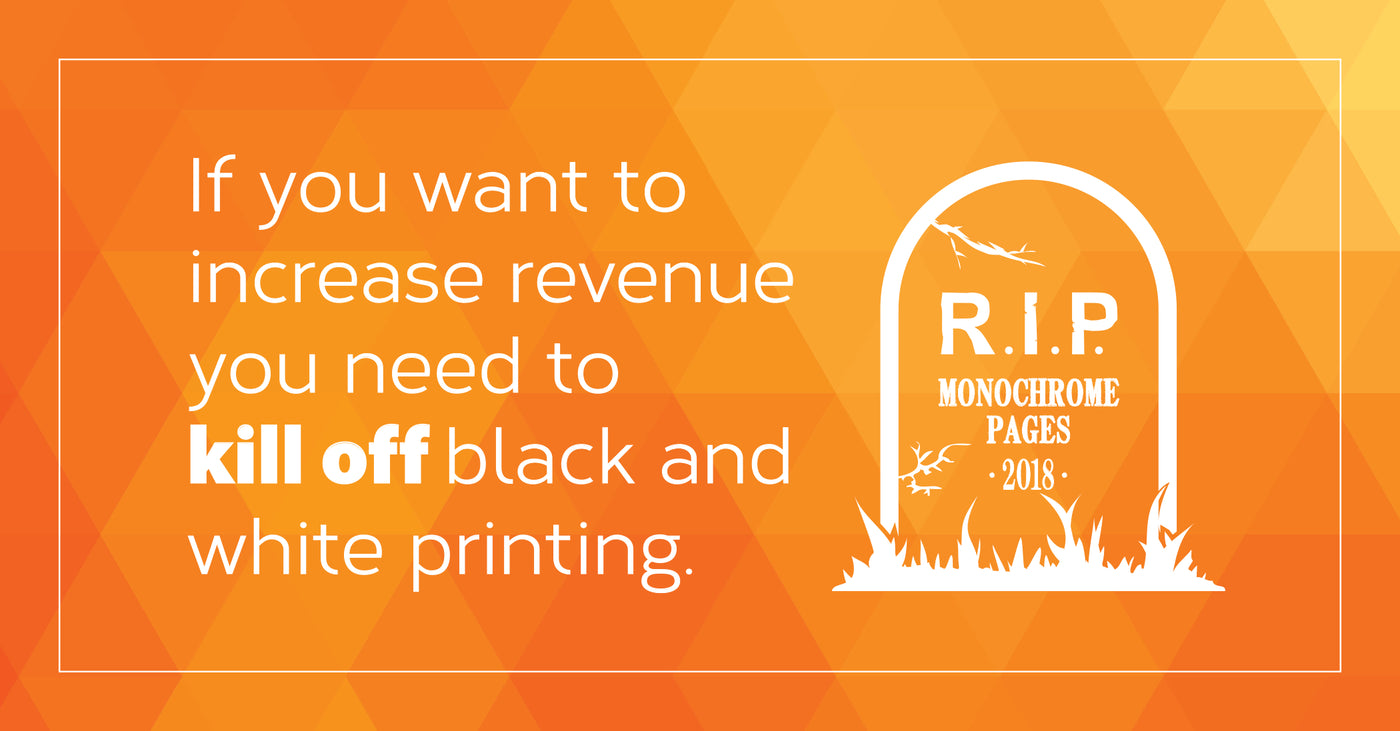
It’s time to increase your black CPP and decrease your color CPP.
Elasticity is a fancy way of measuring how sensitive a product is to a change in price. It should be used by businesses to determine their pricing strategy. In the office equipment industry, most dealers ignore elasticity and it costs them millions of dollars. The best path forward to increase revenue and profit in office printing is to adopt a blended page rate strategy.
Back in university, I took a fourth-year economics course called Price Theory and Application. It was mandatory in economics and, at the time, I felt like the professor was looking for Will Hunting, (think: Good Will Hunting—the movie) instead of trying to teach us. Holy cow was it dense, or more likely I was, but the concepts I learned are likely the most useful from my degree.
How Does it Apply to Office Printing?
Suppose you went into an office, and they were paying 1 cent for each monochrome page. What if you offered them monochrome pages at 0.5 cents? Would you expect any difference in monthly page volume? Now, what if you raised the price to 1.5 cents? Would they print less? In both cases, the answer is effectively no; printing volumes would not change as prices change—up to a point. If the price of a monochrome page increased to (let’s say) 10 cents, you would expect the customer to explore options to avoid printing anything, unless it was absolutely necessary. So, monochrome pages are highly inelastic; they do not fluctuate much to changes in price.
Now think about color printing: as the cost of color pages decrease, customers do actually tend to print more, right? Wrong. Well, kind of. What really happens, is that customers migrate away from monochrome and into color. They couldn’t completely switch to 100% color, because many documents are monochrome; that number is likely between 20 and 25%.
Check out the graph below to better understand how that looks.

Currently, the industry-wide printing in color output is about 20% of total pages. In the spirit of Good Will Hunting, our focus should be on trying to turn the 20/80 split into 80/20 color to monochrome. We already have good data about how color page volumes have responded to lower costs. For a decade, color pages hovered around 10 cents per page, and volumes barely budged beyond 10%. Over the past 6-7 years, manufacturers have lowered supply and hardware costs, and dealers are now easily hitting 7 cents per color page; volumes have doubled, and the industry-wide estimate is around 20% color pages.
One of the drags on color adoption, however, is that dealers continue to lower monochrome costs as well. The rationale is that the competition also keeps lowering costs. This action increases the delta between color and mono and makes migration to color more difficult. True, we don’t operate in a vacuum, but we already showed that those mono pages are inelastic.
Here’s an Example:
If a customer prints 100,000 monochrome pages per month, and you decrease the CPP by 1/10 of a cent, do you know how much that effects revenue? $100 bucks. Don’t tell me a customer will disrupt their workflow for $100 bucks. That’s insane. The real secret is to adopt a blended page strategy.
Let’s consider those 100,000 pages again. 20,000 of those are likely color, but, let’s say that if we could offer the customer a 4 cent CPP, they would migrate 50%. If all those pages are monochrome, you would generate $1,000 a month in revenue, assuming a 1 cent CPP. A 50/50 split would generate $4,000 in revenue.
If they were already printing 80/20 mono and color, and their cost was 7 cents color and 1 cent mono, they’d already be paying $2200 a month for the pages anyway. While the cost increase is certainly there, I bet the customer would be fixated on the dramatic functionality increase they would get with color printing. Rightly so! They know that color printing is increasing and instead of trying to govern mono/color adoption, that will eventually increase their costs anyway, they now have certainly.
I know what you are thinking: lowering a page cost to 4 cents sounds dangerous, but it’s just math. Customers will pay a higher price for higher quality output, they already do that every day, but they are forced to think about it too much because the industry uses an antiquated pricing strategy to reinforce color printing as excessive.

One sacred cow that needs to be sacrificed here: monochrome printers and MFPs. I still see most OEMs delivering half of their product line in monochrome only devices. Selling those devices into an account is a guarantee that your revenue will decline as pages decline.
If you need help discussing a single price page strategy, drop me a line.


